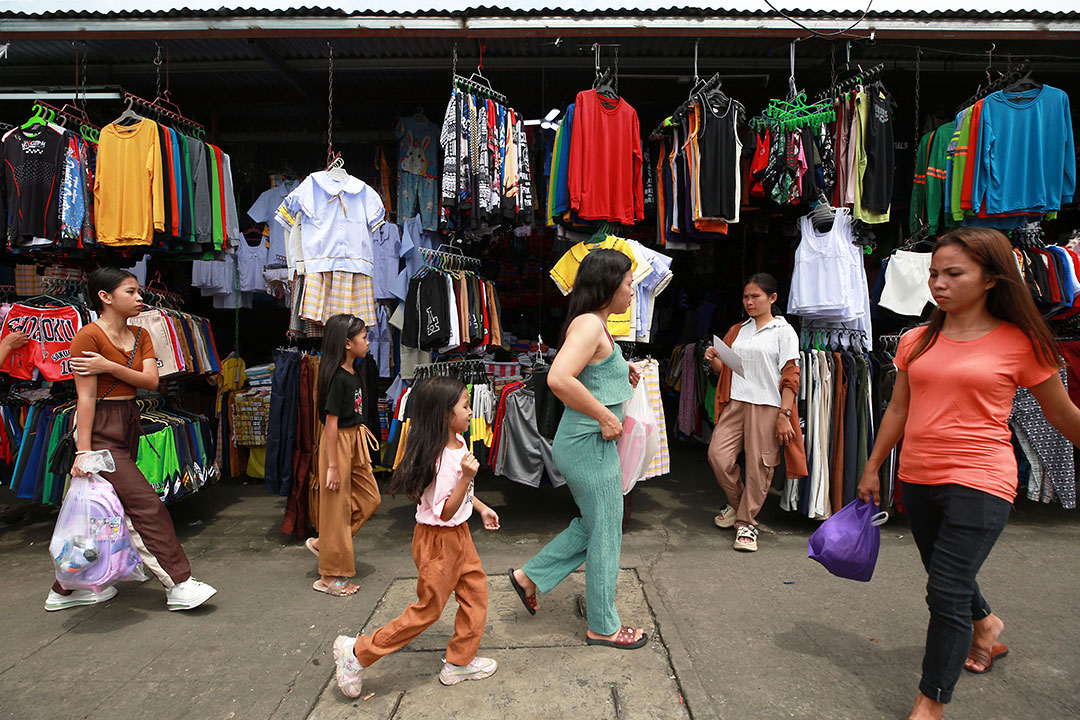




Monthly Economic Update: One for the road
 DOWNLOAD
DOWNLOAD

Inflation Update: Still low, still slow
 DOWNLOAD
DOWNLOAD

Philippines Trade Update: Exports momentum continues
 DOWNLOAD
DOWNLOAD


PHL likely to grow by 5-6% this year — House think tank

The government of President Ferdinand R. Marcos, Jr. might have done enough pump-priming and should let the private sector take on a bigger role in boosting the economy, according to a congressional think tank.
“The resilience and ingenuity demonstrated by Filipinos, particularly in crises, should serve as a reminder that the government can trust the private sector to do its part in growing the economy. To realize this potential, policymakers must prioritize providing a favorable environment for businesses to thrive,” the Congressional Policy and Budget Research Department (CPBRD) said in a report on Monday.
“This includes lowering regulatory burdens, improving infrastructure, investing in education and skills development in areas that offer the highest economic returns, and fostering competition,” it added.
The Philippine economy would probably grow by 5.02% to 6.17% this year, compared with the government target of 6-7%, the CPBRD said, noting that heightened inflationary pressures, tightening fiscal constraints, weak capital formation and anemic growth in critical productive sectors could further hamper growth.
The think tank said inflation is still a “large and growing threat to economic growth and stability.”
“If prevailing inflationary pressure remains unabated, the likelihood of an economic slowdown is heightened,” it added.
For the first six months of 2024, headline inflation averaged 3.5%, slightly higher than the central bank’s 3.3% full-year forecast.
“Anticipated shifts in regional and global value chains, tightening fiscal constraints, growing geopolitical instability, and the Philippines’ vulnerability to climatic shocks (i.e., a single typhoon that hits Central Luzon has the outsized potential to severely aggravate existing agricultural productivity issues) are other potential threats on the horizon,” the think tank said.
The CPBRD expects growth momentum to continue in the second and third quarters, before decelerating in the fourth quarter.
In a low-growth trajectory, the think tank sees gross domestic product (GDP) expanding by 5.05% in the second quarter, 5.7% in the third quarter and 3.56% in the fourth quarter.
“The low-growth trajectory can be viewed as the expected scenario if inflation accelerates and begins eroding productivity — sooner rather than later,” it said.
On the other hand, the CPBRD’s high-growth scenario sees GDP expanding by 6.3% in the second quarter, 7.04% in the third quarter and 5.35% in the fourth quarter.
“While the Philippine economy faces significant headwinds, it also has the potential for robust and inclusive growth. The path forward necessitates a balanced approach that addresses immediate challenges while laying the foundation for long-term sustainable development,” the CPBRD said.
The think tank said a strong partnership between the government and the private sector can help the Philippines realize its full economic potential.
The Philippine economy faces both challenges and opportunities in the current global economic landscape, it said.
“Exploiting its strengths in services, manufacturing, and agriculture, the country can position itself as a competitive player in emerging regional markets — and eventually the global market,” it said.
“This, however, requires a collaborative effort from both the public and private sectors to build robust markets, foster innovation, and leverage emerging technologies.”
Meanwhile, Security Bank Corp. Chief Economist Robert Dan J. Roces said the government’s 6-7% GDP growth target is not out of reach despite elevated interest rates and high inflation.
“Rising remittances and a potential infrastructure spending boost offer promising signs,” he said in a Viber message.
“Streamlining regulations, investing in vital infrastructure, and nurturing a skilled workforce can unlock private sector potential beyond restrictive requirements,” Mr. Roces said adding that the Marcos administration’s focus on infrastructure and public-private partnerships is a step in the right direction.
The government should also limit its intervention in the economy to allow the private sector to stimulate the local economy, Leonardo A. Lanzona, an economics professor at the Ateneo de Manila, said in a Facebook Messenger chat.
“The economy is so dependent on government expenditures that any underspending causes a negative effect on growth,” he told BusinessWorld. “With private consumption and investment declining, the government in turn has crowded out the private sector and hence not been able to meet its targets.”
Rizal Commercial Banking Corp. Chief Economist Michael L. Ricafort said Philippine GDP growth could normalize to around 5.5-6.5% annually in the coming years.
In a Viber message, he said it would be possible for the Philippines to achieve 6% GDP growth in the following quarters due to the continued recovery of businesses and increases in government spending in preparation for the 2025 midterm elections. – Kenneth Christiane L. Basilio
This article originally appeared on bworldonline.com





 By BusinessWorld
By BusinessWorld